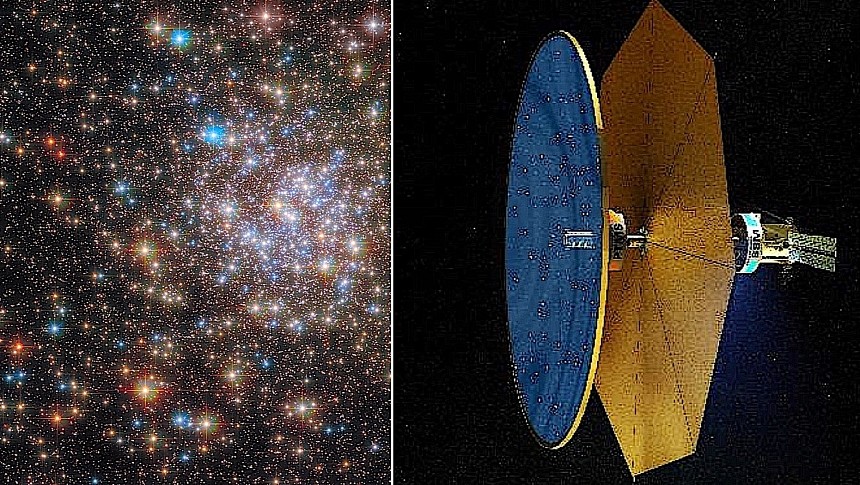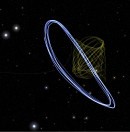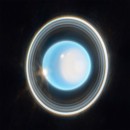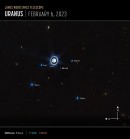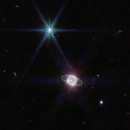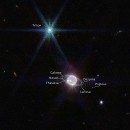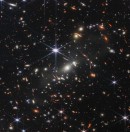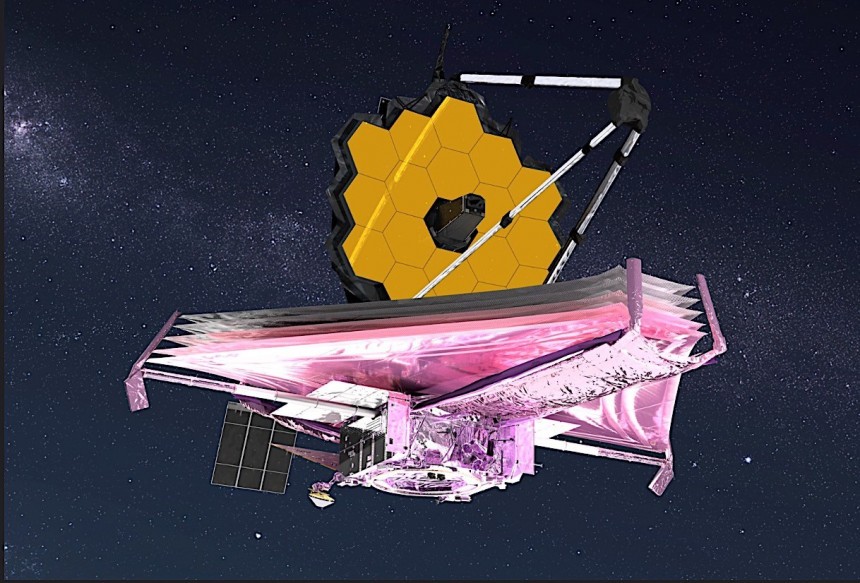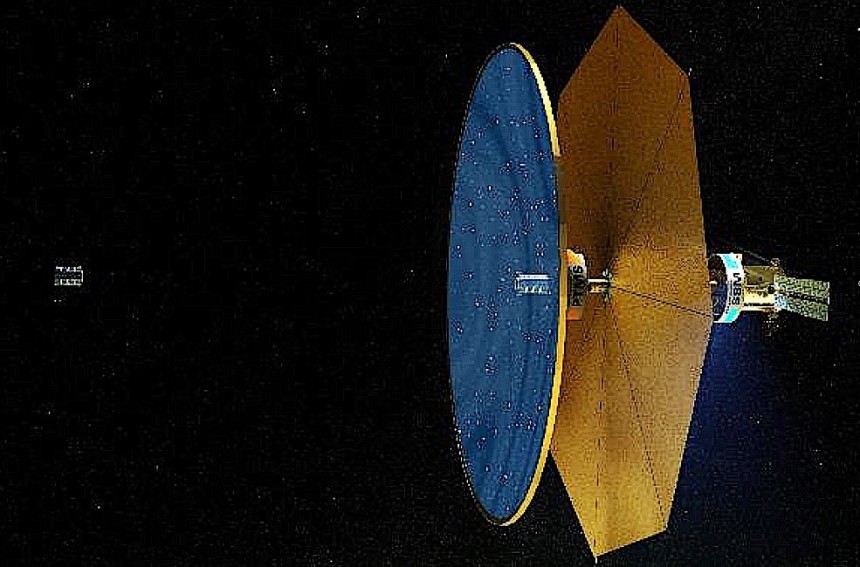The still-young James Webb Space Telescope (JWST) has proven in the few years it has been up there, almost a million miles away from home, that a large telescope positioned just right is the perfect tool to spy on the Universe and unlock its secrets.
By all accounts, Webb is the most expensive telescope ever made. It's also the largest our world has ever devised, with an aperture (the size of its main mirror) of 21 feet (6.5 meters). That's huge by any standards, and it allowed the piece of hardware to make some incredible discoveries these past few years.
That's because the size of the mirror determines how much light is collected, and essentially how far into space and time a telescope can see. Webb is the perfect tool for that at the moment, but its record size today might just not be enough for the needs of tomorrow and, naturally, even bigger ones will be required.
Yet the larger the telescope, the more difficult it is to send it into space. Webb's mirror had to be folded to fit inside the rocket that carried it to space, and even if that could work for telescopes of similar size, it's not something that can be applied to mirrors with an aperture of 164 feet (50 meters).
You read that right, 164 feet, which is about half the length of a football field. It's how big a design called the Fluidic Telescope is, far larger than Webb and far beyond the generally agreed limit of financial feasibility, which is 33 feet (10 meters). How, then, could such a thing be sent up there?
It all has to do with the way the mirrors are made. Existing ones are made by sanding and polishing glass or metal, time and again, until the desired shapes and curves are achieved. It is a process that's prohibitively expensive for mirrors this large, and can only take place on Earth.
Yet NASA and the Technion Israel Institute of Technology think their Fluidic Telescope idea might be a way around that issue. FLUTE for short, the hardware will not be made the good-old fashion way, but by "taking advantage of the way fluids naturally behave in microgravity."
It's droplets of fluid the team, led by NASA Ames Research Center’s Edward Balaban, is looking at, which behave differently under Earth's gravity and up in space. Down here, these droplets collapse on themselves under the power of gravity every time they are over 0.08 inches (2 mm) in size. In space, however, no matter the size of the droplet, it tends to get in the most energy-efficient shape, which is a sphere, and stay that way.
Given how fluids in space also tend to cling to surfaces, it wouldn't be at all impossible to make them take whatever shape we desire.
The team behind FLUTE has this idea of using just the right amount of fluid to adhere to the interior surface of a circular frame. Due to its microgravity properties, the fluid would spread all over the frame. It will do so while continuing to try and get into a spherical shape, and could eventually form a fluid-covered surface. If the fluid is forced to take a concave shape over the frame, and it's also reflective, it could easily be used as a telescope. And size would not be an issue, given how the entire thing will almost literally build itself up there in space.
The people currently pondering this idea say liquids that are yet to be determined could be launched in batches into orbit as raw material for the mirror. So would the frame needed for the liquids to spread over. Once at the destination, the liquids would meet the frame and form into a gigantic telescope mirror - the size mentioned above is only used for research purposes, as there are few limits as to how large it could be.
Another crucial aspect of such a design is the fact the surface of the mirror will forever remain fluid. This will not only make it extremely smooth and suitable for the task, but it would allow it, for instance, to heal itself in case of damage from space dangers.
So, how far along are we with this thing? Last we heard of it was at the beginning of the year, when FLUTE was chosen to be funded through the Phase I NASA Innovative Advanced Concepts (NIAC) program.
Also, "small-scale experiments in shaping lenses from liquids in different environments" have been performed. They include tests in a buoyancy lab, on board a zero-gravity airplane, and even up on the International Space Station (ISS).
Work is presently ongoing to identify such a telescope's key components, and devise a sub-scale experiment to test in low-Earth orbit.
We have no info on when that might happen, and a full-scale application of the tech is probably very far off.
When it will get here, though, FLUTE and its kind could shine new light on first-generation stars, the very first galaxies, and even planets like our own Earth.
That's because the size of the mirror determines how much light is collected, and essentially how far into space and time a telescope can see. Webb is the perfect tool for that at the moment, but its record size today might just not be enough for the needs of tomorrow and, naturally, even bigger ones will be required.
Yet the larger the telescope, the more difficult it is to send it into space. Webb's mirror had to be folded to fit inside the rocket that carried it to space, and even if that could work for telescopes of similar size, it's not something that can be applied to mirrors with an aperture of 164 feet (50 meters).
You read that right, 164 feet, which is about half the length of a football field. It's how big a design called the Fluidic Telescope is, far larger than Webb and far beyond the generally agreed limit of financial feasibility, which is 33 feet (10 meters). How, then, could such a thing be sent up there?
It all has to do with the way the mirrors are made. Existing ones are made by sanding and polishing glass or metal, time and again, until the desired shapes and curves are achieved. It is a process that's prohibitively expensive for mirrors this large, and can only take place on Earth.
It's droplets of fluid the team, led by NASA Ames Research Center’s Edward Balaban, is looking at, which behave differently under Earth's gravity and up in space. Down here, these droplets collapse on themselves under the power of gravity every time they are over 0.08 inches (2 mm) in size. In space, however, no matter the size of the droplet, it tends to get in the most energy-efficient shape, which is a sphere, and stay that way.
Given how fluids in space also tend to cling to surfaces, it wouldn't be at all impossible to make them take whatever shape we desire.
The team behind FLUTE has this idea of using just the right amount of fluid to adhere to the interior surface of a circular frame. Due to its microgravity properties, the fluid would spread all over the frame. It will do so while continuing to try and get into a spherical shape, and could eventually form a fluid-covered surface. If the fluid is forced to take a concave shape over the frame, and it's also reflective, it could easily be used as a telescope. And size would not be an issue, given how the entire thing will almost literally build itself up there in space.
The people currently pondering this idea say liquids that are yet to be determined could be launched in batches into orbit as raw material for the mirror. So would the frame needed for the liquids to spread over. Once at the destination, the liquids would meet the frame and form into a gigantic telescope mirror - the size mentioned above is only used for research purposes, as there are few limits as to how large it could be.
So, how far along are we with this thing? Last we heard of it was at the beginning of the year, when FLUTE was chosen to be funded through the Phase I NASA Innovative Advanced Concepts (NIAC) program.
Also, "small-scale experiments in shaping lenses from liquids in different environments" have been performed. They include tests in a buoyancy lab, on board a zero-gravity airplane, and even up on the International Space Station (ISS).
Work is presently ongoing to identify such a telescope's key components, and devise a sub-scale experiment to test in low-Earth orbit.
We have no info on when that might happen, and a full-scale application of the tech is probably very far off.
When it will get here, though, FLUTE and its kind could shine new light on first-generation stars, the very first galaxies, and even planets like our own Earth.
